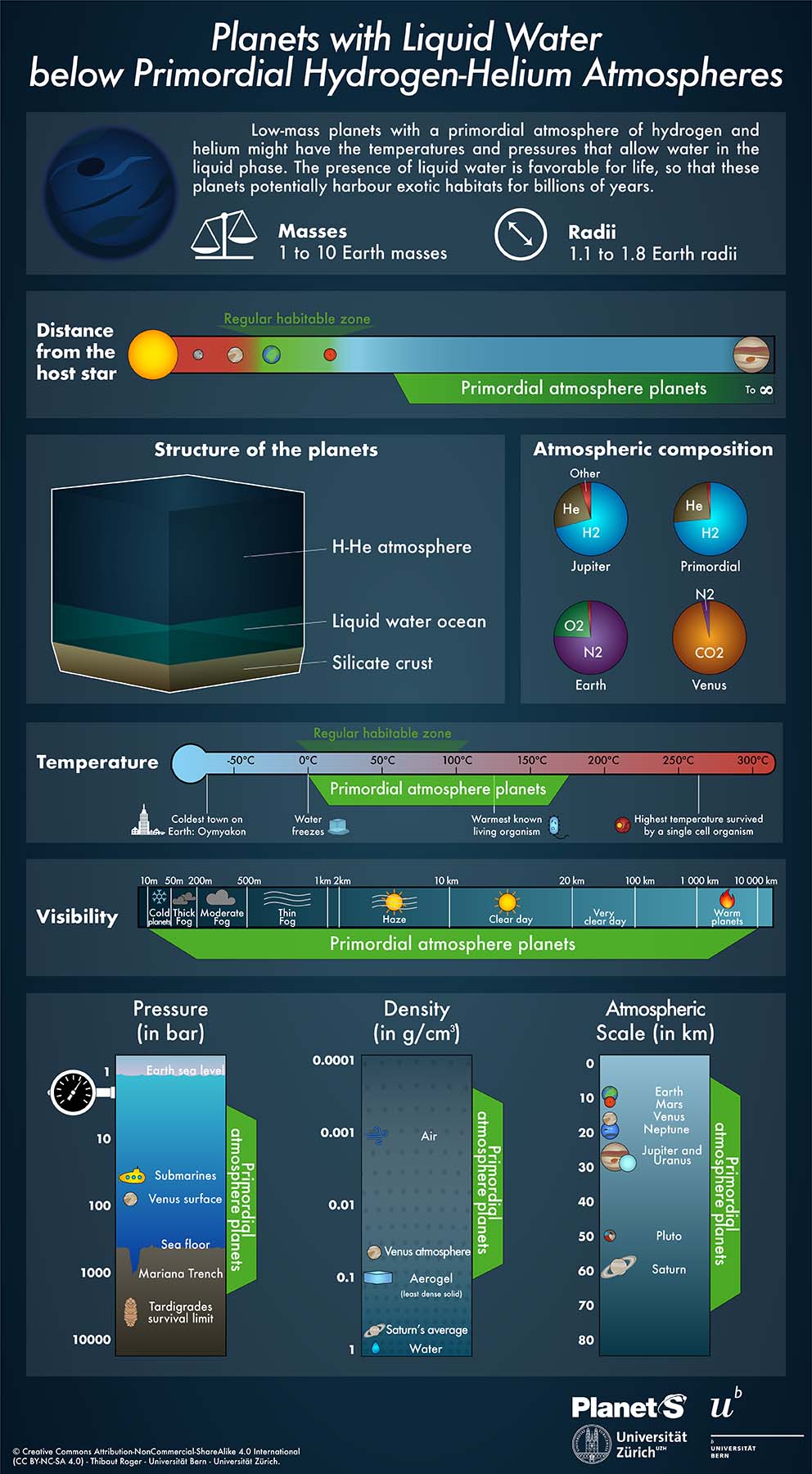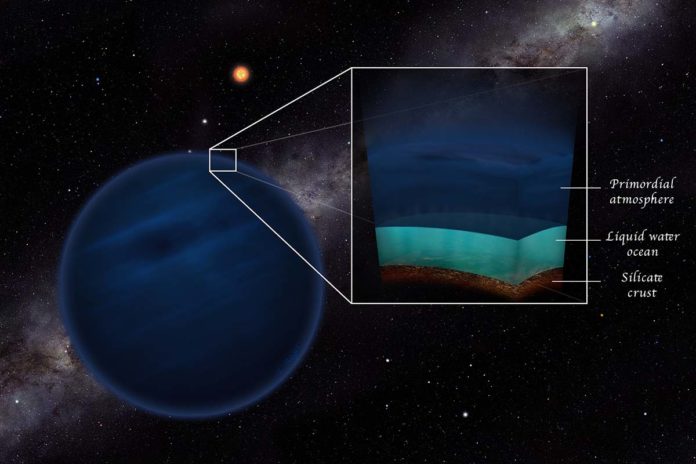As we know, the emergence of life requires three building blocks: an energy source, access to nutrition, and the presence of liquid water.
Apart from these requirements, it remains unknown to what extent conditions on other planets need to resemble Earth to be habitable. But what if we search for planets that are different from Earth yet potentially be able to harbor exotic life instead of searching for Earth-like ones?
There is a possibility that a key ingredient for life, liquid water, may exist on planets that don’t resemble Earth’s environment.
Now, researchers from the University of Bern, the University of Zurich, and the National Centre of Competence in Research (NCCR) PlanetS report in a new study that liquid water could also exist for billions of years on planets that are very different from Earth. This idea questions the prevailing view of searching for Earth-like planets for habitability.
Tracing back to Earth’s primordial environment
One of the reasons that water can be liquid on Earth is its atmosphere”, study co-author Ravit Helled, Professor of Theoretical Astrophysics at the University of Zurich and a member of the NCCR PlanetS explains. “With its natural greenhouse effect, it traps just the right amount of heat to create the right conditions for oceans, rivers, and rain,” says the researcher.
At present, the majority of Earth’s biomass is concentrated on its surface. Mostly because of complex photosynthetic organisms such as land plants. For most of its geological history, this biomass was mostly present on subsurfaces, such as the ocean.
Life has adapted to many other relatively extreme environments, such as the depths of the ocean at kbar pressures, although it is unknown how many of these organisms live independently from life on the surface.
In the search for life on extraterrestrial planets, it needs to be considered that life might manifest and thrive under conditions that would be considered extreme on Earth from the organisms that have already been found on Earth.
When the planet first formed out of cosmic gas and dust, it collected an atmosphere consisting mostly of Hydrogen and Helium. This atmosphere is called the primordial atmosphere.
The primordial atmosphere, dominated by hydrogen and helium, would have insufficient greenhouse gases that are important on Earth, such as CO2 or methane. However, if the atmosphere is massive enough, H2 will act as a greenhouse gas. At sufficient pressures, the H2 molecules undergo enough collisions to create a dipole moment, causing them to absorb the infrared radiation coming from the planet; this is known as ‘collision-induced absorption. It could raise the surface temperature enough to allow for a liquid water ocean.
Over a period of time, Earth lost its primordial atmosphere.
Massive planets can collect much larger primordial atmospheres, which they can keep indefinitely in some cases. “Such massive primordial atmospheres can also induce a greenhouse effect – much like Earth’s atmosphere today. We, therefore, wanted to find out if these atmospheres can help to create the necessary conditions for liquid water”, Helled says.
The research team thoroughly modelled numerous planets and simulated their development over billions of years.
They accounted for the properties of the planets’ atmospheres and the intensity of the radiation of their respective stars, as well as the planets’ internal heat radiating outwards. This geothermal heat plays only a minor role for the conditions on the surface of the Earth, but it could contribute more significantly on planets with massive primordial atmospheres.
“What we found is that in many cases, primordial atmospheres were lost due to intense radiation from stars, especially on planets that are close to their star. But in the cases where the atmospheres remain, the right conditions for liquid water can occur”, reports Marit Mol Lous, Ph.D. student and lead-author of the study. According to the researcher at the University of Bern and the University of Zurich, “in cases where sufficient geothermal heat reaches the surface, radiation from a star like the Sun is not even necessary so that conditions prevail at the surface that allows the existence of liquid water.”
“Perhaps most importantly, our results show that these conditions can persist for very long periods of time – up to tens of billions of years,” points out the researcher, who is also a member of the NCCR PlanetS.
Opening new view on the search of extraterrestrial life: On non-Earth like planets
“To many, this may come as a surprise. Astronomers typically expect liquid water to occur in regions around stars that receive just the right amount of radiation: not too much, so that the water does not evaporate, and not too little, so that it does not all freeze”, study co-author Christoph Mordasini, Professor of Theoretical Astrophysics at the University of Bern and member of the NCCR PlanetS explains.
“Since the availability of liquid water is a likely prerequisite for life, and life probably took many millions of years to emerge on Earth, this could greatly expand the horizon for the search for alien lifeforms. Based on our results, it could even emerge on so-called free-floating planets that do not orbit around a star”, Mordasini says.
Limitation of the study
Researchers claim that even if their results look promising, they don’t know how common it is to have the right atmosphere along with the presence of liquid water on any planet.
The question about how life would emerge on planets having the right conditions could be resolved with the help of astrobiologists.
“Still, with our work we showed that our Earth-centred idea of a life-friendly planet might be too narrow,” Mordasini concludes.

Journal Reference
- Marit Mol Lous, Ravit Helled & Christoph Mordasini. Potential long-term habitable conditions on planets with primordial H–He atmospheres. Nature Astronomy (2022). DOI: 10.1038/s41550-022-01699-8
